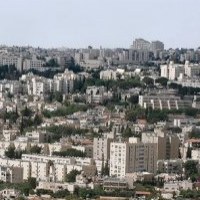![]()
Fri, April 08, 2011 | 09TELAVIV2501
WikiLeaks: Arms Smuggling into Lebanon and the Gaza Strip
Summary:
Concurrent to the Joint Political Military Group (JPMG) Executive Session, IDF J5 and Israel Defense Intelligence (IDI) officers briefed U.S. JPMG delegation members on current arms transfers and weapons smuggling into Lebanon and the Gaza Strip. IDF J5 and IDI officers first focused on arms transfers to Hizballah in Lebanon via Iran and Syria, and provided current estimates of Hizballah arms. IDF J5 and IDI officers argued that Hizballah’s ultimate goal during any future conflict is to launch a massive number of missiles and rockets daily into Israeli territory, including those that can reach the Tel Aviv area. J5 and IDI also described the sophisticated smuggling routes from Iran into the Gaza Strip, arguing that Hamas is now more powerful than prior to Operation Cast Lead. IDF J5 and IDI officers noted improved countersmuggling efforts by Egypt, but stressed more must be done to curb smuggling into Gaza. This is the second of four cables (septel) reporting on the 40th Joint Political Military Group.
End Summary.
Source: WikiLeaks
Cable dated:2009-11-18T14:32:00
S E C R E T SECTION 01 OF 02 TEL AVIV 002501
SIPDIS
E.O. 12958: DECL: 11/18/2019
TAGS: PREL, PGOV, MOPS, PTER, KWBG, EG, IR, LE, IS
SUBJECT: 40TH JPMG: COUNTERSMUGGLING TECHNICAL DISCUSSION (PART 2 OF 4)Classified By: A/DCM Marc Sievers, reasons 1.4 (b),(d)
1. (S) Summary: Concurrent to the Joint Political Military Group (JPMG) Executive Session, IDF J5 and Israel Defense Intelligence (IDI) officers briefed U.S. JPMG delegation members on current arms transfers and weapons smuggling into Lebanon and the Gaza Strip. IDF J5 and IDI officers first focused on arms transfers to Hizballah in Lebanon via Iran and Syria, and provided current estimates of Hizballah arms. IDF J5 and IDI officers argued that Hizballah’s ultimate goal during any future conflict is to launch a massive number of missiles and rockets daily into Israeli territory, including those that can reach the Tel Aviv area. J5 and IDI also described the sophisticated smuggling routes from Iran into the Gaza Strip, arguing that Hamas is now more powerful than prior to Operation Cast Lead. IDF J5 and IDI officers noted improved countersmuggling efforts by Egypt, but stressed more must be done to curb smuggling into Gaza. This is the second of four cables (septel) reporting on the 40th Joint Political Military Group. End summary.
2. (SBU) Israeli attendees included representatives from the IDF J5, IDI, Shin Bet, and Mossad. The U.S. delegation was led by PM Coordinator for Counter Piracy Robert Maggi, and included PM/RSAT John Schwenk, OSD Israel Desk Officer Eric Lynn, J5 Israel Desk Officer LTC Alan Simms, U.S. DAO Tel Aviv Assistant Air Attache Matt Yocum, EUCOM LCDR Molly McCabe, and U.S. Embassy Tel Aviv political-military officer Jason Grubb.
3. (S) Maggi stressed the importance of and noted progress with counter-smuggling efforts into Gaza — but also acknowledged the GOI desire to see even further progress. He said the USG was looking for practical ideas to improve counter-smuggling efforts. IDF J5 officers argued that smuggling represents a strategic challenge for the GOI, which is facing a proliferation of knowledge and capabilities that are severely limiting Israel’s diplomatic options for peace. IDF J5 made the case that weapons and knowledge proliferate from state actors, which disrupts diplomatic regional efforts. IDF J5 highlighted “regional faultlines,” with the United States and Iran leading two opposing camps — and countries such as China, Russia, and Qatar remaining on the sidelines with unclear intentions.
4. (S) IDI officers briefed on arms “deliveries” to the Gaza Strip and Lebanon, making the case with the latter that these arms transfers were done openly and should not be considered smuggling. IDI noted that since 2006, Hizballah has increased its quantity of sophisticated arms with improved range and accuracy — these arms were acquired via Syria and Iran despite the presence of UNIFIL and Lebanese Armed Forces (LAF). IDI highlighted the continued desire by Hizballah to avenge the assassination of its former military commander Imad Mughniyah, and pointed to failed attempts to do so in Azerbaijan and Egypt. Finally, IDI reviewed the arms delivery route from Syria to Lebanon via the Beqa’a Valley, and then to points south through Beirut.
5. (S) IDI presented estimates of Hizballah arms in Lebanon, including a breakdown of arms south of the Litani River. According to the IDI, Hizballah possesses over 20,000 rockets, hundreds of 220 mm and 302 mm rockets, several hundred “Fajr” rockets, hundreds of simple anti-tank (AT) launchers with rockets and missiles, and hundreds of advanced anti-tank wire guided missiles (ATGM), dozens of SA-14, SA-7, and QW-1 anti-aircraft guns, several Ababil unmanned aerial vehicles (UAVs), an unknown quantity of C-802 coastal missiles and up to thousands of improvised explosive devices (IEDs).
6. (S) Given this arsenal, Maggi asked what the IDF thought Hizballah’s intentions were. IDI officers opined that Hizballah was preparing for a long conflict with Israel in which it hopes to launch a massive number of rockets at Israel per day. IDI officers noted in the 2006 Second Lebanon War, Tel Aviv was left untouched — Hizballah will try to change the equation during the next round and disrupt everyday life in Tel Aviv. A Mossad official noted that Hizballah will want to ensure it can launch rockets and missiles to the very last day of the conflict, i.e., avoid running out of munitions. He estimated that Hizballah will try to launch 400-600 rockets and missiles at Israel per day — 100 of which will be aimed at Tel Aviv. He noted that Hizballah is looking to sustain such launches for at least two months.
7. (S) IDI then shifted focus to the Gaza Strip, describing three circles of arms smuggling: 1. arms sources and
TEL AVIV 00002501 002 OF 002
financing, such as Iran, Syria, Lebanon, and unfettered arms markets such as Eritrea and Yemen, and possibly China; 2. transit areas and states such as the Red Sea, Yemen, Sudan, Syrian, Lebanon, and Libya; and finally, 3. the “close circle” along the Sinai-Egyptian border and Philadelphi route. Maggi asked what percentage of arms transfers occurred via land, sea and air. IDI noted that it was difficult to determine: smugglers tend to prefer the naval route — as there are fewer obstacles — but the last segment almost always occurred overland. IDF J5 added that land smugglers are learning from past experience and building new overland “bypasses.” When asked about air routes from Iran over Turkey, IDI officials indicated that Turkey has been made aware of such activity, although a Mossad representative suggested Turkey may not be entirely aware of the extent of such activity, given the IRGC’s smuggling expertise. The GOI highlighted that focusing solely on the last phase of smuggling (e.g. along the Philadelphi route) would only lead to limited success, and that wider efforts were key.
8. (S) IDI also provided an analysis of weapons entering Gaza following Operation Cast Lead. IDI noted that one of the goals of Cast Lead was to damage Hamas’ ability to produce its own weapons. In this regard, the IDF was successful, but Hamas is reconstituting its capabilities. According to the IDI, Hamas possibly possesses a few rockets with ranges over 40 km — perhaps as far as 60-70 km, or within range of Tel Aviv. In addition, the IDI believes Hamas possesses quality AT systems such as the Kornet PG-29 and quality anti-aircraft artillery (AAA). These weapons join an already potent arsenal including Grad rockets with ranges up to 40 km, ammonium perchlorate (APC) oxidizer for indigenous rocket production, hundreds of 120, 80 and 60 mm MBs, dozens of mortars, C5 K air-to-surface rockets, PG-7 AT rockets and launchers, SA-7 MANPADS, PKS AAA MGs and thousands of rounds of ammunition, and quality AT, such as Sagger missiles and launchers, and light anti-tank weapon (LAW) rockets.
9. (S) IDF J5 presented some basic benchmarks for possible countersmuggling solutions for Gaza. First, Egyptian national commitment is required. Other benchmarks outlined by the IDF included a clear chain of command, control of the Sinai and its inhabitants, systematic treatment of tunnel infrastructure, trial and imprisonment of smugglers, and overcoming traditional failures such as bribery and lack of coordination. IDF J5 noted that Egyptian Intelligence Minister Soliman has been supportive, while there is growing awareness on the part of Egyptian Defense Minister Tantawi — who the IDF views as an obstacle to counter-smuggling efforts. However, IDF J5 said there is a lack of coordination between the Egyptian Army and intelligence service on counter-smuggling efforts.
10. (S) The IDF has observed a more systematic response by Egypt in recent months, including assigning guards to newly discovered tunnel entries, or even blowing up tunnels — by IDF estimates, the Egyptian Army has collapsed 20-40 tunnels in the last 4-5 months. Nevertheless, the IDF continues to see a lack of urgency on the part of Egypt regarding smuggling into the Sinai; little attention has been paid to improving the socio-economic conditions of Bedouins primarily responsible for Sinai smuggling. While Egypt has made several key arrests — including prominent smuggler Muhammad Sha’er — others are still at large. Finally, the IDF noted the construction of an underground barrier and sensors’ network — but in many cases, the smugglers have dug deeper tunnels to avoid the network.
11. (S) The IDF J5 outlined consultations with geology and tunnel experts, whom suggested several possible solutions to the Sinai-Gaza tunneling network: constant and specific mine activity in the vicinity of the border to a depth of 20-30 meters; the use of a shock device or stun charge, or smoke at a tunnel entrance for deterrence purposes; constructing underground obstacles 90 meters deep to destabilize current tunnel infrastructure; close supervision and inspection of buildings in urban areas, in which there is a high concentration of trucks and newly built rooftops and roads; and the arrest of major smugglers — such as Darwish Madi — and utilization of interrogation to discover major tunnels and dismantle smuggling networks.
12. (U) PM Coordinator for Counter Piracy Maggi has cleared this cable.
CUNNINGHAM



 RSS
RSS












#WikiLeaks: Arms Smuggling into #Lebanon and the #Gaza Strip | #Israel #Cablegate http://j.mp/dHzolf
RT @CrethiPlethi: #WikiLeaks: Arms Smuggling into #Lebanon and the #Gaza Strip | #Israel #Cablegate http://j.mp/dHzolf
RT @metzada3833 RT @CrethiPlethi: #WikiLeaks: Arms Smuggling into #Lebanon and the #Gaza Strip | #Israel #Cablegate http://j.mp/dHzolf
#WikiLeaks: Arms Smuggling into #Lebanon and the #Gaza Strip | #Israel #Cablegate http://j.mp/dHzolf
RT @CrethiPlethi: #WikiLeaks: Arms Smuggling into #Lebanon and the #Gaza Strip | #Israel #Cablegate http://j.mp/dHzolf
RT @CrethiPlethi: #WikiLeaks: Arms Smuggling into #Lebanon and the #Gaza Strip | #Israel #Cablegate http://j.mp/dHzolf